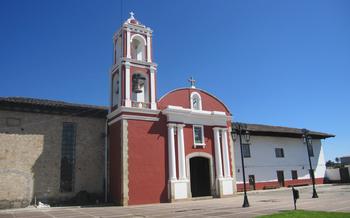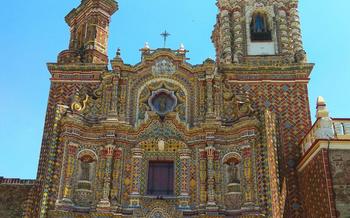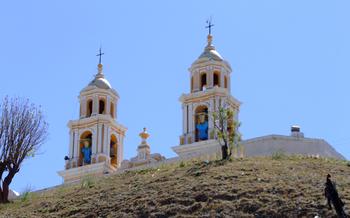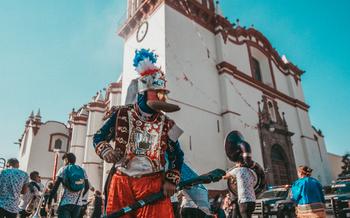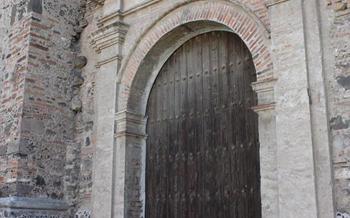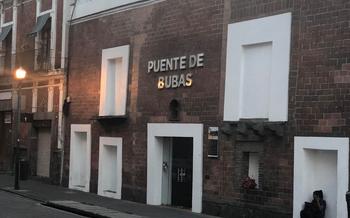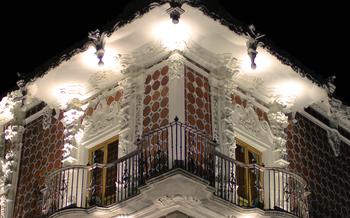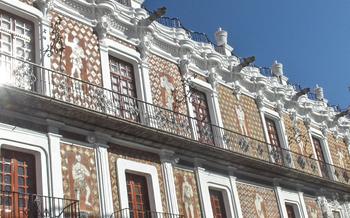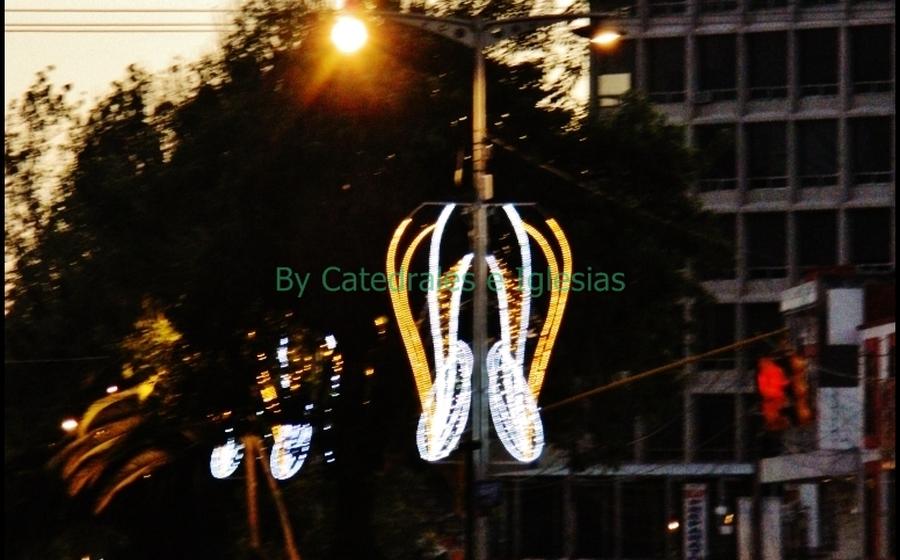
Museo de la Radio de Puebla
- Location and Accessibility
- Exploring the Museum's Exhibits
- The Golden Age of Radio
- Radio and the Mexican Revolution
- Educational Programs at the Museo de la Radio de Puebla
- Interactive Exhibits: A Hands-On Experience
- Special Exhibitions and Events
- The Museum's Historical Building
- The Museum's Contribution to the Community
- Local Cuisine and Restaurants Near the Museum
- Souvenirs and Gift Shop
- Local Hotels and Accommodations
- Nearby Attractions and Points of Interest
Location and Accessibility
Situated in the heart of Puebla's historic center, the Museo de la Radio de Puebla is a captivating destination easily accessible by various modes of transportation. To reach the museum, head to Avenida Reforma 113, located a short walk from the iconic Zócalo, the city's main square. For those utilizing public transportation, numerous bus routes conveniently stop nearby, ensuring a hassle-free journey. If you prefer the comfort of a private vehicle, ample parking options are available in the vicinity.
The museum's commitment to inclusivity extends to visitors with disabilities. Wheelchair-accessible entrances and ramps provide seamless access throughout the premises, allowing everyone to enjoy the museum's treasures without barriers. Additionally, accessible restrooms and designated seating areas cater to the needs of visitors with mobility challenges.
Operating hours are from Tuesday to Sunday, allowing ample opportunities to immerse yourself in the world of radio. Plan your visit between 10 am and 5 pm to make the most of the museum's exhibits and interactive experiences. Admission fees are minimal, ensuring that everyone can access this cultural gem.
Exploring the Museum's Exhibits
The Museo de la Radio de Puebla showcases the fascinating evolution of radio technology through engaging and interactive exhibits. The museum's collection features an impressive array of vintage radios, transmitters, and broadcasting equipment, inviting visitors to trace the journey of radio from its humble beginnings to its current sophisticated form. Interactive displays provide a hands-on experience, allowing visitors to explore how radios work and experiment with different broadcasting techniques.
The museum's thematic sections are meticulously curated to highlight key milestones in radio history. From the development of early radio receivers to the rise of commercial broadcasting, each section offers a glimpse into the transformative impact of radio on society. Visitors can marvel at the intricate workings of antique radios, witness the evolution of broadcasting technology, and learn about the pioneers who shaped the world of radio.
Historical documents and photographs adorn the walls of the museum, providing a visual narrative of radio's profound influence on Mexican culture and society. These exhibits showcase how radio shaped public opinion, influenced political discourse, and played a crucial role in shaping the nation's identity.
The Golden Age of Radio
During the 1930s and 1940s, Mexico experienced a period of cultural and artistic flourishing known as the Golden Age of Radio. This era was marked by the rise of radio broadcasting and the emergence of popular radio personalities who captured the hearts and minds of the nation.
One of the most famous radio personalities of this era was Francisco Gabilondo Soler, better known as "Cri-Cri." His children's radio program, "El grillito cantor" ("The Singing Cricket"), was a beloved favorite that entertained and educated generations of young listeners.
Another popular program was "La Hora Azul" ("The Blue Hour"), hosted by the legendary announcer Pedro Vargas. This musical program featured live performances by renowned singers and musicians, and it was a must-listen for music lovers across the country.
Radio played a significant role in shaping Mexican culture and society during this time. It brought entertainment and information to remote communities, fostered a sense of national unity, and helped to promote Mexican music and literature.
The Museo de la Radio de Puebla features a special exhibit dedicated to the Golden Age of Radio. Here, visitors can learn about the history of this important era, listen to recordings of popular radio programs, and view artifacts and memorabilia from the time.
Radio and the Mexican Revolution
During the tumultuous years of the Mexican Revolution (1910-1920), radio played a pivotal role in shaping the course of events. As a relatively new technology at the time, radio provided a powerful means of communication and propaganda for both the revolutionary factions and the government.
Revolutionary leaders such as Emiliano Zapata and Pancho Villa used radio broadcasts to rally support for their cause, broadcast news and information to the public, and coordinate their military operations. Radio broadcasts also played a crucial role in mobilizing public opinion against the oppressive regime of President Porfirio Díaz.
One of the most famous examples of radio's influence during the revolution was the broadcast of the Plan de Ayala in 19This document, which outlined the goals of the Zapatista movement, was widely disseminated via radio and helped to galvanize support for the revolution.
The Mexican Revolution was a watershed moment in the history of radio, demonstrating its potential as a tool for social and political change. The artifacts and documents related to this period in the museum's collection provide a fascinating glimpse into the role of radio in shaping the course of Mexican history.
Educational Programs at the Museo de la Radio de Puebla
The Museo de la vibrant center for education and training. The museum offers a range of educational programs designed to promote radio literacy and foster a new generation of radio professionals.
Workshops and classes on radio broadcasting and production are conducted throughout the year, providing participants with hands-on experience in all aspects of radio making. Aspiring radio professionals can enroll in training programs that cover everything from scriptwriting and sound engineering to broadcasting techniques and station management.
The museum also collaborates with educational institutions to develop educational resources for students and researchers. These resources include lesson plans, interactive exhibits, and historical documents that can be used in classrooms and research projects. By working with schools and universities, the museum helps to ensure that the legacy of radio is preserved and passed on to future generations.
In addition to its regular programs, the museum also hosts workshops, seminars, and conferences on radio-related topics. These events bring together experts from the field to share their knowledge and insights with the public. Attendees can learn about the latest trends in radio broadcasting, explore the history of radio, and network with other professionals in the industry.
Interactive Exhibits: A Hands-On Experience
The Museo de la Radio de Puebla takes learning to another level by offering a range of interactive exhibits that immerse visitors in the world of radio. These exhibits provide a hands-on experience that brings the history and science of radio to life.
One of the highlights is the radio broadcasting simulator, where visitors can step behind the microphone and try their hand at being a radio announcer. The simulator provides a realistic experience, allowing visitors to record their own broadcasts and hear them played back on the museum's radio station.
Another popular exhibit is the listening station, which features a collection of historical radio broadcasts and music. Visitors can listen to these recordings and learn about the evolution of radio programming over the years.
For a more interactive experience, visitors can explore the interactive displays that explain radio concepts in a fun and engaging way. These displays use touchscreens, sound effects, and animations to illustrate how radios work and how they have impacted our lives.
The Museo de la Radio de Puebla also offers a variety of interactive activities for children, making it a great destination for families. These activities include puzzles, games, and experiments that help children learn about the science and history of radio in a playful and educational way.
Special Exhibitions and Events
In addition to its permanent exhibits, the Museo de la Radio de Puebla hosts a variety of temporary exhibitions and events throughout the year. These special exhibitions often focus on specific aspects of radio history, such as the evolution of radio technology, the role of radio in social and cultural change, or the impact of radio on specific historical events.
The museum also organizes workshops, seminars, and conferences on radio-related topics, bringing together experts and enthusiasts from around the world. These events provide an opportunity for visitors to learn more about the history and science of radio, as well as the latest developments in the field.
Film screenings, concerts, and other cultural events are also held at the museum, offering visitors a chance to experience the rich cultural heritage of Puebla and Mexico. These events often feature performances by local musicians, artists, and filmmakers, as well as screenings of classic and contemporary films related to radio.
Information on upcoming events is available on the museum's website and social media pages. Visitors are encouraged to check the museum's calendar regularly to stay updated on the latest exhibitions and events.
The Museum's Historical Building
The Museo de la Radio de Puebla is housed in a magnificent historical building that is a testament to the city's rich architectural heritage. Constructed in the late 19th century, the building originally served as a textile factory, reflecting Puebla's textile industry's prominent role at that time. Its facade showcases a blend of neoclassical and art nouveau elements, featuring intricate stone carvings, elegant arches, and decorative wrought ironwork.
Inside, the building's spacious rooms have been carefully restored and adapted to accommodate the museum's exhibits. Original features such as high ceilings, exposed brick walls, and wooden beams have been preserved, creating a unique and atmospheric setting for the museum's collection. The building's grand staircase, with its ornate balustrade, is a particularly striking feature that adds to the museum's charm.
The restoration of the building was a collaborative effort between the museum's curators and local architects, who worked diligently to retain the building's historical integrity while adapting it to its new purpose. The result is a harmonious blend of old and new, creating a space that is both modern and respectful of the building's heritage.
The Museo de la Radio de Puebla's historic building is not just a container for its collection but an integral part of the museum experience. Its architectural significance and historical charm contribute to the museum's unique atmosphere and make it a destination for both radio enthusiasts and architecture aficionados alike.
The Museum's Contribution to the Community
The Museo de la Radio de Puebla is not merely a repository of historical artifacts but also an active participant in the cultural and educational fabric of the city. The museum's mission extends beyond preserving the legacy of radio to promoting radio literacy and appreciation within the community.
One of the museum's primary initiatives involves educational programs tailored for schools and community groups. These programs introduce students and members of the public to the history, science, and cultural impact of radio. Through interactive workshops, lectures, and hands-on activities, the museum aims to foster an understanding of radio's role in shaping society.
The museum also collaborates with local radio stations and organizations to promote radio as a medium for community engagement and expression. This collaboration includes joint events, workshops, and training programs that empower individuals to utilize radio for educational, informational, and entertainment purposes.
The museum's commitment to community outreach extends to hosting events and initiatives that celebrate radio's rich heritage and its relevance in contemporary society. These events include film screenings, concerts, exhibitions, and panel discussions featuring experts, artists, and enthusiasts from the world of radio.
By actively engaging with the community, the Museo de la Radio de Puebla plays a crucial role in promoting radio literacy, preserving the cultural legacy of radio broadcasting, and fostering a vibrant and informed society.
Local Cuisine and Restaurants Near the Museum
After a fascinating journey through the world of radio at the Museo de la Radio de Puebla, tantalize your taste buds with the delectable culinary offerings of the city. Puebla's cuisine is renowned for its rich flavors, vibrant colors, and unique ingredients, making it a paradise for food enthusiasts.
Strolling along the charming streets surrounding the museum, you'll find a diverse array of restaurants, cafes, and traditional eateries serving up authentic Mexican dishes. Savor the aromatic mole poblano, a complex sauce made with over 20 ingredients, or indulge in the crispy cemitas, a local sandwich stuffed with savory fillings.
For a truly immersive experience, explore the Mercado de Sabores Poblanos, a vibrant market showcasing the culinary delights of the region. Here, you can sample fresh produce, traditional sweets, and regional specialties like chalupas and tlayoyos.
Vegetarian and vegan travelers will also find plenty of options in Puebla. Many restaurants offer meat-free versions of classic dishes, and there are several dedicated vegetarian and vegan eateries to choose from.
To fully immerse yourself in the local dining scene, consider joining a food tour. These guided excursions take you to hidden gems and introduce you to the culinary traditions of Puebla.
Remember to ask for recommendations from locals or your hotel concierge to discover the best restaurants and dishes that the city has to offer. Puebla's cuisine is a feast for the senses, and it's an integral part of the city's cultural heritage.
Souvenirs and Gift Shop
The Museo de la Radio de Puebla offers a well-curated gift shop where visitors can find a variety of souvenirs and merchandise to commemorate their visit. From museum-branded t-shirts and caps to replicas of vintage radios and unique gifts inspired by the exhibits, there's something for everyone.
Proceeds from the gift shop directly support the museum's educational programs and initiatives, ensuring its continued operation and preservation. Whether you're looking for a special souvenir for yourself or a thoughtful gift for a friend or family member, the museum's gift shop is a must-visit.
Here are some tips for finding the best souvenirs and gifts within your budget:
- Look for unique items that are exclusive to the museum. This could include limited-edition prints, hand-crafted replicas, or locally-made souvenirs that reflect the museum's collection and mission.
- Consider purchasing a book or catalog related to the history of radio or the museum's exhibits. These publications often provide in-depth insights and behind-the-scenes stories that you won't find anywhere else.
- If you're on a tight budget, consider purchasing a postcard or magnet featuring the museum's iconic logo or building. These small souvenirs are affordable and easy to pack, making them a great way to remember your visit.
- Don't forget to ask the gift shop staff for recommendations. They can help you find the perfect souvenir that fits your interests and budget.
Local Hotels and Accommodations
When planning your visit to the Museo de la Radio de Puebla, finding comfortable and convenient accommodation nearby is essential.
The museum's central location offers a range of hotel options within walking distance or a short drive. Whether you prefer budget-friendly guesthouses, mid-range hotels, or luxurious accommodations, you're sure to find something to suit your needs and budget.
For those seeking a unique and immersive experience, consider staying in a historic hotel or bed and breakfast. Several charming options in the city center offer a glimpse into Puebla's rich past and provide easy access to the museum and other attractions.
To ensure a comfortable and memorable stay, check online reviews, compare prices, and book your accommodation in advance, especially during peak tourist seasons. Many hotels offer special discounts and packages for extended stays or group bookings.
Whether you choose a modern hotel with amenities or a cozy guesthouse with local charm, your stay in Puebla will be enhanced by the city's vibrant culture, delicious cuisine, and friendly hospitality.
Nearby Attractions and Points of Interest
The Museo de la Radio de Puebla is surrounded by a wealth of cultural and historical attractions that offer visitors a glimpse into the city's rich past and vibrant present. Within walking distance, you'll find the majestic Catedral de Puebla, a masterpiece of Spanish colonial architecture, and the Biblioteca Palafoxiana, one of the oldest and most important libraries in the Americas. For a taste of local history, visit the Museo Amparo, which houses a vast collection of pre-Hispanic artifacts, colonial paintings, and contemporary art.
A short stroll away, you'll discover the vibrant Mercado del Parian, a traditional market where you can browse stalls selling everything from colorful handicrafts to delicious local delicacies. For a unique culinary experience, head to the nearby Calle de los Dulces, where you can sample traditional sweets and candies made with fresh fruit, nuts, and spices.
If you're looking for a day trip, consider visiting the ancient city of Cholula, located just a few kilometers from Puebla. Cholula boasts the largest pyramid in the world by volume, the Great Pyramid of Cholula, as well as several other impressive archaeological sites.
To make the most of your time in Puebla, plan a day or weekend trip to explore these nearby attractions. Whether you're interested in history, art, architecture, or gastronomy, you'll find plenty to see and do in this vibrant city.
